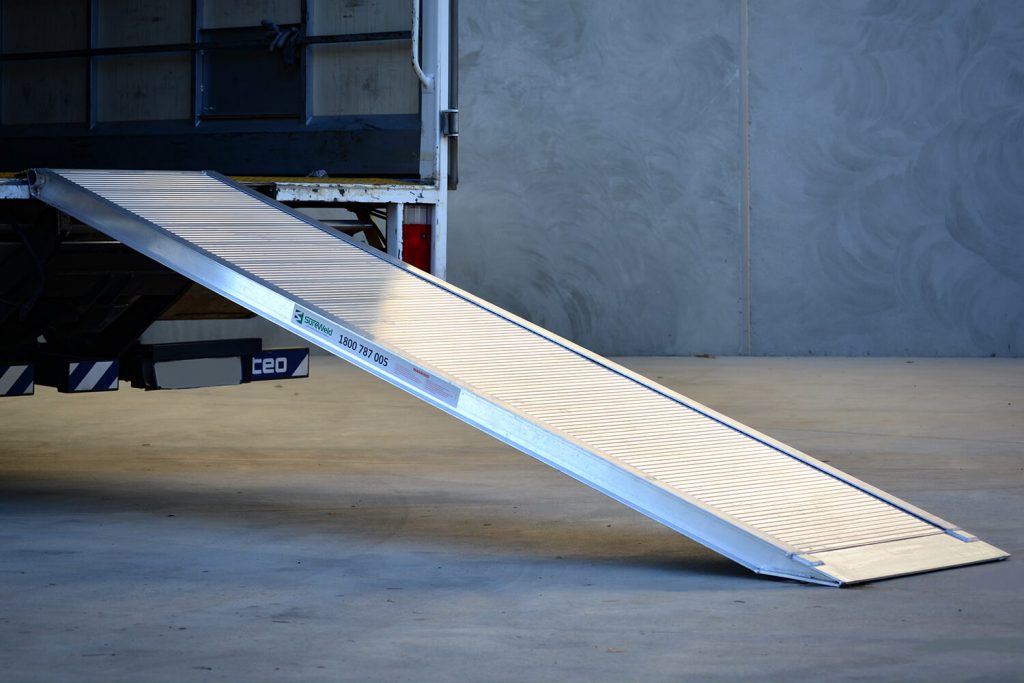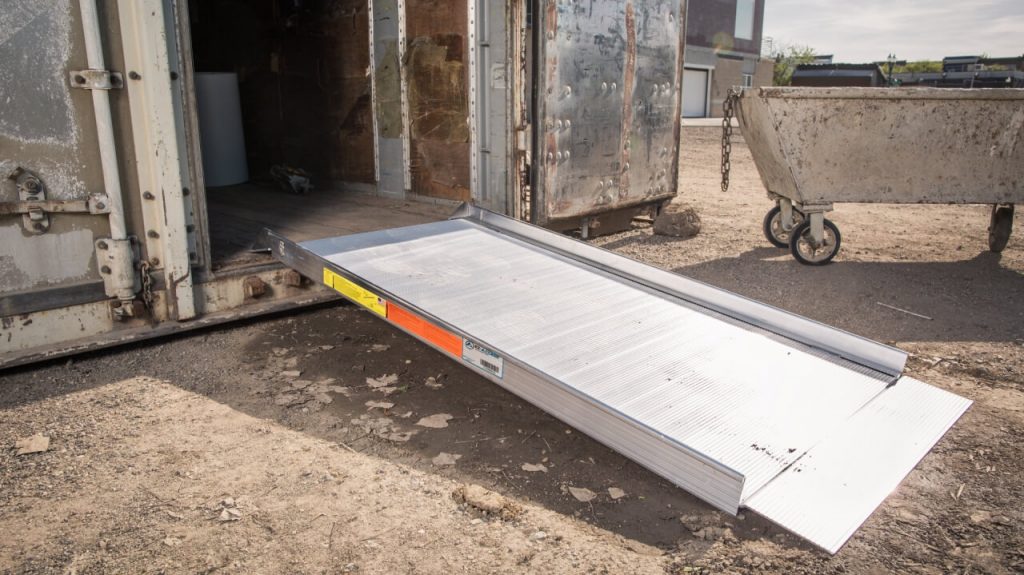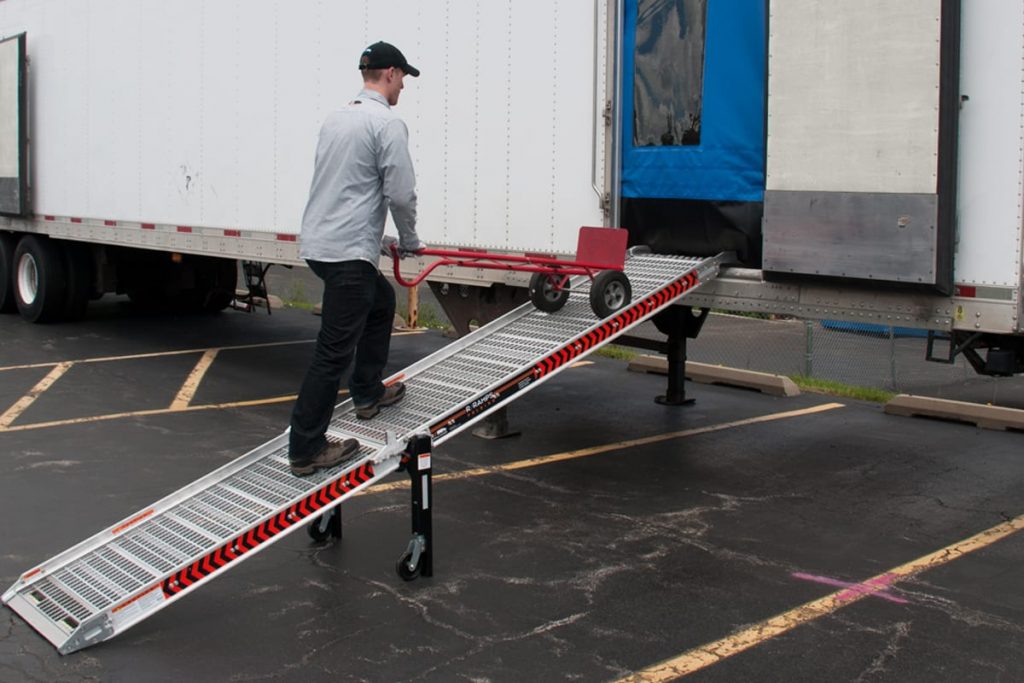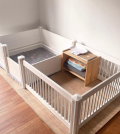Navigating the Ups and Downs: A Closer Look at Walk Ramps in Various Settings
As a society, we’ve come a long way in terms of providing access to buildings and facilities for people with disabilities as well as those handling heavy loads. The invention of walk ramps has made a huge difference in this regard, providing an easier way to traverse steps, door thresholds, and other obstacles with reduced effort.

The initial design was largely based off of folding construction scaffolding, but since then the design has evolved to provide more versatile solutions. As times changed, the need for these walk ramps has become a necessity in public and commercial settings, with numerous useful features and qualities to choose from.
What Are the 4 Types of Walk Ramps?
Depending on the specific needs of the user and design requirements, today’s stable and lightweight walk ramps come in 5 main types, including:
Folding
The first and most popular type of walk ramp is made using folding components and typically features a single-hinged design that attaches to the bottom of a staircase or doorway threshold. This type allows for easy transport and storage, as well as a quick installation process.
The folding mechanism consists of a series of interlocking steps that quickly fold up for easy transport or storage, with smooth and clean transitions from one level to the next. Some models can be packed up with a press of a button, while others need to be folded and unfolded manually.
Threshold

These models are designed to bridge the gap between a doorway threshold and the ground by sitting flush against the lip of a curb or doorway. These are great for providing an easy and safe transition from the indoors to the outdoors, as well as providing access to vehicles or other large objects.
Their lightweight design makes them easy to move and store, with no additional components needed for installation. Their mounting brackets also provide a secure and stable platform, enabling them to be used safely with wheelchairs or other mobility devices.
Suitcase
This type gets its name from the suitcase-style design which allows it to be easily folded and carried like a piece of luggage. It normally has a single-hinged design down the middle, which packs up easily and can be taken anywhere. These ramps are great for providing an easy transition from one level to the next, regardless of the surface.
They’re also relatively wider than the other types, perfect for wheelchair or mobility device users. This means they’re also quite appropriate for moving heavy or bulky items across thresholds, providing a safe and efficient solution.
Permanent
This type of ramp is installed directly onto the surface and requires no additional components. They’re great for providing a more permanent solution to the user, as they remain in place and don’t need to be folded or carried. As such, they’re typically installed at buildings or institutions that require more frequent use.
While there are certainly a lot of advantages of temporary ramps, permanent varieties provide a long-term solution with more stability and a stronger structure. This is particularly useful for areas that require frequent use, such as loading docks and school campuses.
Key Aspects to Look Out For
Regardless of the exact model you deem most suitable for your needs, you’d need to look into the specifications and features before purchasing. Sometimes we tend to reach for the most affordable option, but this isn’t always a good idea.
Proper Installation Techniques
Safety and stability are certainly at the top of the list, especially if you’re looking to install a permanent walk ramp. Getting the job done right the first time can save you from any hassles or damages in the future. Make sure to get a professional installer to do the job if necessary, as this can help ensure it’s done correctly and securely.
Some models may also require some additional adjustments or customizations to adapt to the specific environment. Others have fewer components and are easier to install, with simple clip-on features that attach right to the surface.
Materials
The exact materials you’ll need may depend on the usage and weight load you’ll be dealing with. Materials such as aluminium, steel, and even wood are often used to construct walk ramps, with some designed for indoor or outdoor use.

Aluminium is perhaps the most preferred choice for lightweight and easy-to-install models, whereas steel is usually better suited for more permanent or heavy-duty options. But this also plays a part in the device’s weight capacity and load distribution, as heavier models tend to have a sturdier and more reliable setup.
Safety Features
Walk ramps come with various safety features to ensure a safe transition from one level to the next. For starters, a non-slip surface is essential for preventing any trips or falls, especially when traversing wet surfaces. Reflective markings can be useful in low-light areas, while side rails and edge protection can help guide users in the right direction.
Curbs are also critical for providing additional guidance along the ramp’s surface. They’re generally designed to be wider than the rest of the ramp, allowing for secure footing while in use. They can be as simple as a raised edge or ridge along the side, or slightly more detailed with a combination of tactile surfaces.
Maintenance and Replacements
While walk ramps are generally quite durable and reliable, it’s always important to keep up with regular maintenance. This can help identify any potential problems or hazards before they become too severe. Regular cleaning and inspection can help reduce the risk of any injury or damage occurring during use.
You should also consult the manufacturer to determine when replacements may be required. The lifespan of a certain model can vary greatly depending on how often it’s used and the materials that have been used in its construction. Even if a specific option looks like it’s in good condition, you should still consider replacing it if the manufacturer recommends it.






